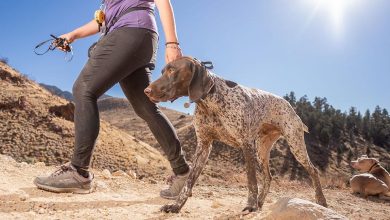How to stop a dog from chasing wildlife

Dogs have an innate instinct to chase, often driven by their predatory nature. While this behavior is natural, it can pose risks not only to wildlife but also to your pet’s safety. Understanding how to effectively manage and redirect this instinct is crucial for responsible pet ownership. In this article, we will explore practical strategies and training techniques to help you prevent your dog from chasing wildlife, ensuring a harmonious coexistence with nature while keeping your canine companion safe and well-behaved. Whether you’re a seasoned dog owner or new to the joys and challenges of having a pet, these guidelines will equip you with the knowledge to curb this behavior and promote a balanced, respectful relationship with the environment.
Understanding the Root Causes of Chasing Behavior
To effectively address the challenge of your dog pursuing wildlife, it’s crucial to delve into the underlying motivations that drive this behavior. Dogs are inherently curious and possess a strong predatory instinct, a legacy from their wild ancestors. This instinctual drive is often fueled by their natural desire to hunt and chase moving objects. Additionally, certain breeds are more predisposed to chasing due to their historical roles as hunters or herders. Understanding these breed-specific tendencies can provide valuable insight into their behavior.
Moreover, a lack of mental and physical stimulation can exacerbate this behavior. Dogs with excess energy or insufficient engagement may resort to chasing as a form of entertainment or exercise. Addressing these root causes involves creating a balanced routine that includes ample exercise and mental challenges. Consider incorporating activities such as:
- Interactive play sessions: Engage your dog with toys that mimic prey, such as flirt poles or squeaky toys.
- Training exercises: Focus on commands like “leave it” or “stay” to redirect their attention.
- Enrichment activities: Use puzzle toys or scent games to stimulate their minds and reduce the urge to chase.

Implementing Effective Training Techniques for Recall and Control
When training your dog to improve recall and control, it’s crucial to implement techniques that are both engaging and effective. Positive reinforcement is key. Reward your dog with treats, affection, or play whenever they return upon being called. This encourages them to associate coming back with positive outcomes. Consistency is essential, so practice recall exercises in various environments, gradually increasing the level of distraction. Start in a quiet, enclosed space and slowly introduce more challenging settings.
Incorporate games and activities that naturally build recall skills. For instance:
- Hide and Seek: Call your dog from another room, rewarding them when they find you.
- Fetch and Return: Use a favorite toy and encourage your dog to bring it back to you.
- Long-Line Training: Use a long lead to practice recall in open spaces, ensuring control while allowing freedom.
Additionally, consider teaching a reliable “leave it” command to manage impulsive chasing behavior. With patience and consistency, these techniques can significantly improve your dog’s recall and control, reducing the likelihood of them chasing wildlife.

Utilizing Tools and Equipment to Manage Outdoor Adventures
When it comes to managing your outdoor adventures with your canine companion, utilizing the right tools and equipment can make all the difference. Harnesses with front clips can provide better control than traditional collars, reducing the instinct to chase by redirecting their focus. Pair this with a long training leash to maintain a safe distance while still allowing freedom for exploration. The training leash gives you the flexibility to practice recall commands in a controlled manner, reinforcing good behavior.
Incorporating technology can also be highly effective. GPS collars not only help in tracking your dog’s location but can also be set to send alerts if your pet strays too far. Additionally, ultrasonic devices emit a sound that can deter dogs from chasing after wildlife without causing any harm. Combine these tools with consistent training and positive reinforcement to cultivate a balanced and harmonious outdoor experience for both you and your dog.

Creating a Safe and Stimulating Environment to Reduce Prey Drive
Crafting an environment that both engages and pacifies your dog is key to managing their instinctual behaviors. Begin by ensuring your dog has plenty of physical and mental stimulation. Regular exercise such as brisk walks, agility training, or playtime in a fenced yard can burn off excess energy that might otherwise be channeled into chasing. Mental stimulation is equally important, so consider introducing puzzle toys or scent games to challenge their minds.
- Interactive toys: Use toys that dispense treats to keep your dog occupied.
- Training sessions: Short, frequent training sessions can reinforce commands and improve focus.
- Safe spaces: Create areas where your dog can observe wildlife from a distance without the temptation to chase, such as a window perch or screened porch.
Additionally, incorporating positive reinforcement techniques can help redirect your dog’s focus. Reward them with treats or praise when they respond calmly to wildlife, reinforcing the idea that ignoring prey is more rewarding than pursuing it. By cultivating a balanced environment, you encourage your dog to engage in healthier, more controlled behaviors.



